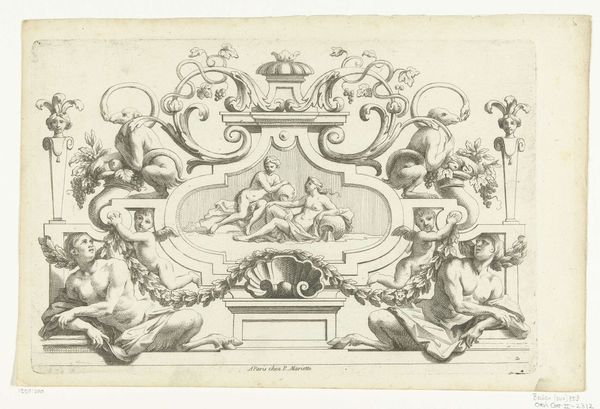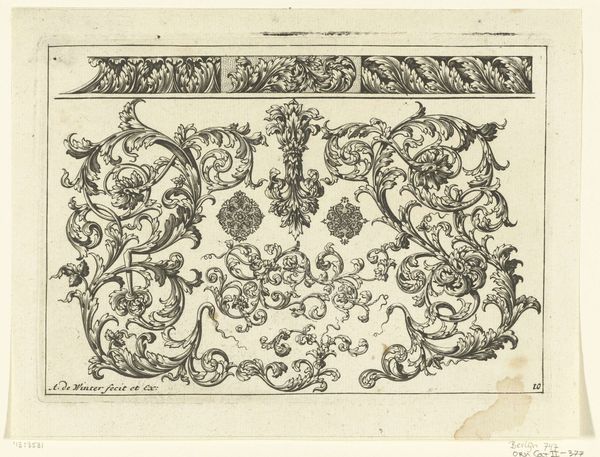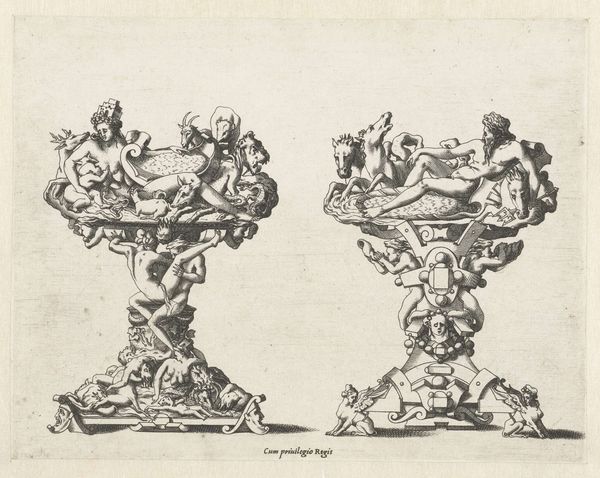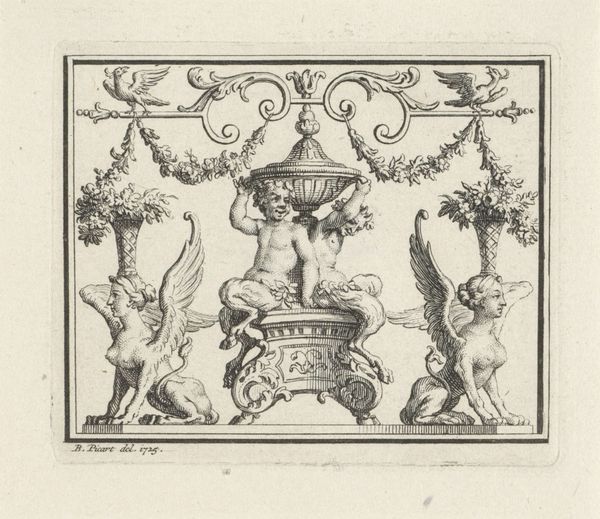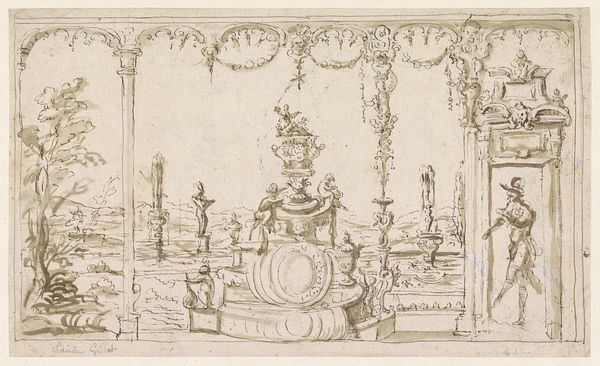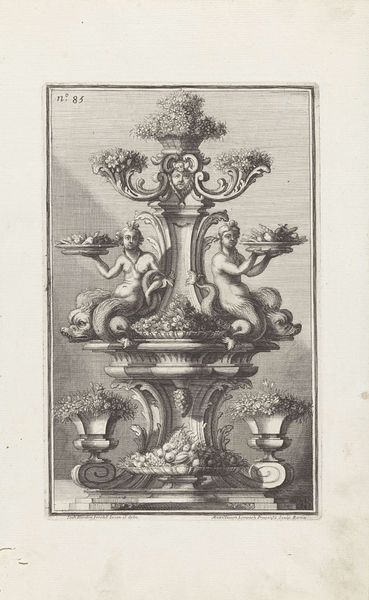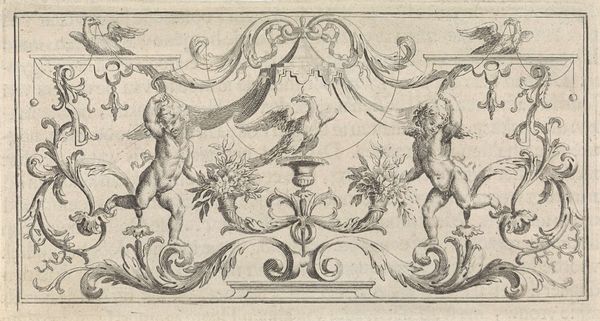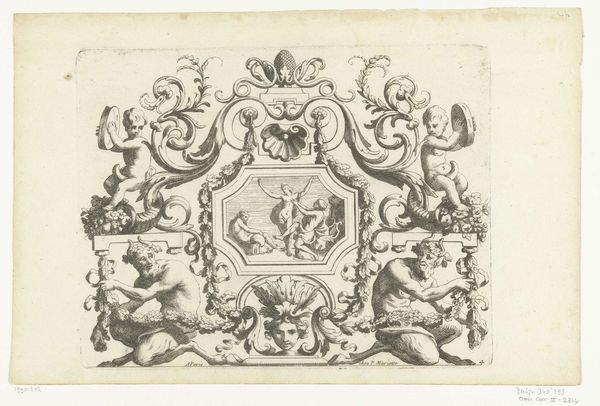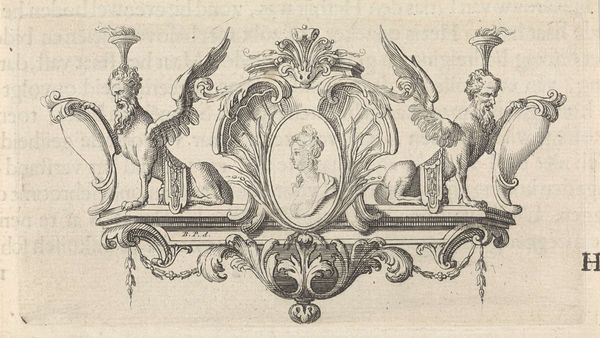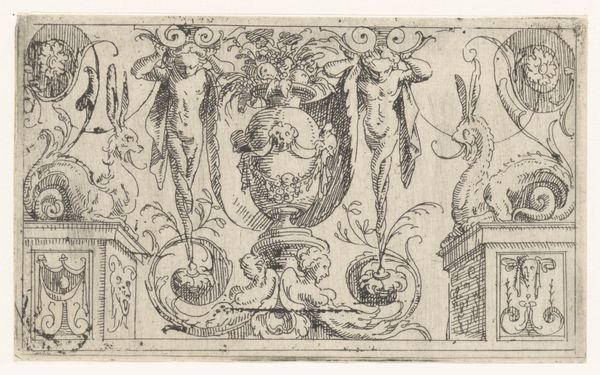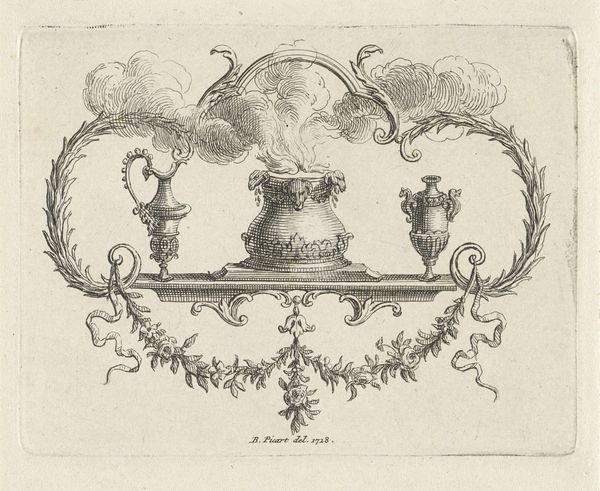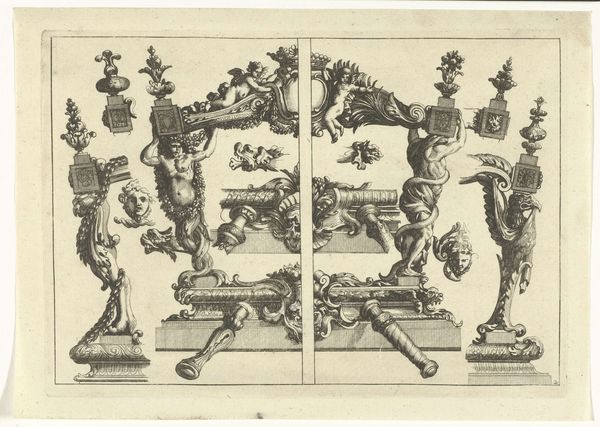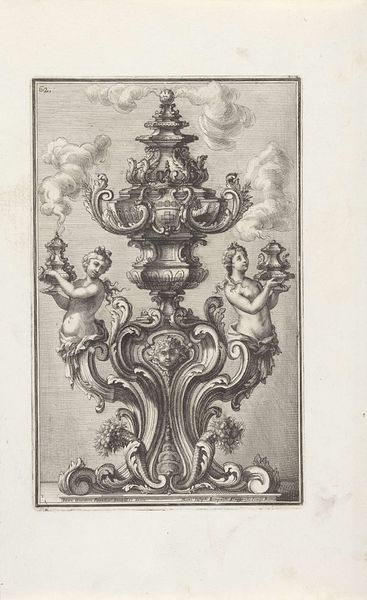
ornament, print, engraving
#
ornament
#
allegory
#
baroque
# print
#
figuration
#
ink line art
#
genre-painting
#
engraving
Dimensions: height 76 mm, width 134 mm
Copyright: Rijks Museum: Open Domain
Curator: The image before us, "Ornament met centauren en vaas," was created in 1727 by Bernard Picart. It’s an engraving, residing within the Rijksmuseum's collection. Editor: Immediately, I notice a duality, a tenderness framed by rigidity. The cherubic centaurs locked in embraces create an incredibly human element juxtaposed against that stark, baroque ornamentation. Curator: Right, these apparent contradictions are key. The piece exemplifies the Baroque sensibility of that era – an embrace of duality as a mirror of societal contradictions around aristocracy, religion, and shifting class boundaries. Editor: The vase itself, with those ambiguous winged creatures flanking it – do you interpret it as more symbolic than decorative? I am curious about this vessel-and-flame icon. Curator: Certainly symbolic. It represents idealized power—masculine, with its militaristic overtones—but it’s softened. Note how Picart positions those images with embraces of intimacy, complicating a simple interpretation of conquest. Consider what happens if we consider this alongside discourses about male power in 18th century France and its connection to gender identity and sexuality. Editor: That contrast creates a psychological landscape. Each centaur supports this symbolic architecture with tenderness, hinting at internal emotional complexity. Is it meant to depict a loving couple? Do you believe these relationships point to something specific during that period? Curator: It’s plausible. Some theorists link this particular period to the early formations of understandings about childhood love. This engraving perhaps suggests societal anxieties concerning pleasure, relationships and identity, especially given the figures' liminal, hybrid nature. Editor: It resonates so profoundly across time. Even now, it speaks to the push and pull between idealized expectations and inner human connection, something that makes the piece extremely memorable. Curator: Indeed, considering it through these critical lenses reminds us how relevant these historical discussions remain in our current world, pushing us to consider what societal structures affect modern understanding. Editor: It seems to ask if humanity should even aspire to this ornamental and elaborate artificiality when instead, we crave something much more vulnerable and sensitive at the core.
Comments
No comments
Be the first to comment and join the conversation on the ultimate creative platform.
